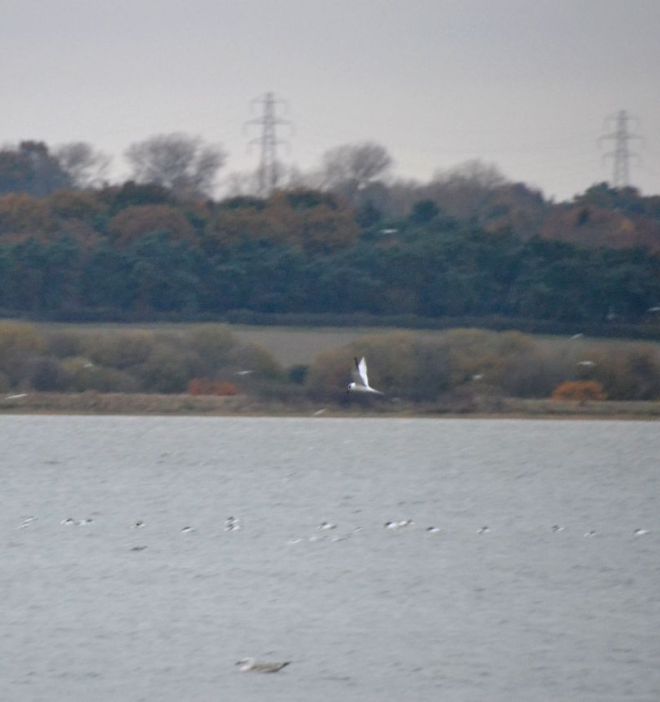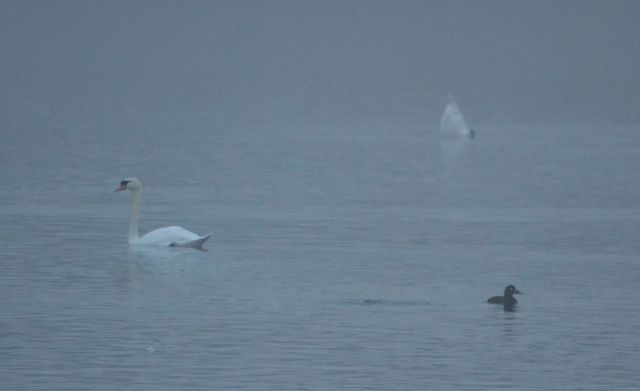I have been wondering where new birds to see might come from this winter, and it more or less has to be something new to fire my imagination currently. Then, yesterday as if to illustrate that rarities will always turn up, an Atlantic storm named Angus blew in this thing of beauty.
On getting home late afternoon from a working Saturday, the day’s highlight on RBA was a vagrant north American Forster’s Tern 130 miles from Oxford. This is the first in Britain since 2003, though the species has been a regular winter visitor to Ireland in the 13-year interim. The usual wintering grounds for this marsh dwelling Tern are southern coasts of the USA and Mexico. I decided that if still present in the morning I would probably go for the lifer.
Upon beholding an image (see here) on Sunday morning my mind was made up. What a subtle, understated gem! A first-winter bird it is slightly larger than a Common Tern with a black bill, dull orange legs and most strikingly a black ear covert patch beneath a pale grey crown. It had been observed between 1 and 4pm from Mistley Quay (TM117321) on the Stour estuary, and reports all stated “showing well”.
I arrived in Mistley at just after 2pm to find a long line of parked cars to one side of the town’s landmark 18th century church towers. A man I parked next to advised me to walk past that monument to the quay where the FT had last been seen around 45 minutes previously. There was quite a concentration of birders there (pictured above), as I had expected for what was the day’s top English draw. This being a mega second ever for Essex, county listers were of course out in force. People told me the FT followed a routine of flying west along the estuary then back east, and everyone present expected it to come round again soon.
The quay edge was topped by a steel mesh fence that is a local bone of contention (see here). Having had my fill of such obstructions when observing the Easington Siberian Accentor last month, I walked past restricted access signs under apparent threat of prosecution to where a small group were also seeking a clearer view. Nobody stopped us. Amongst them was fellow Oxon birder Terry Sherlock. I usually expect to run into one or more of the county’s finest on these occasions, and learned that Andy had also been and gone earlier.
It was now a matter of waiting patiently for the Forster’s Tern to do another circuit. Time passed and on checking RBA Terry found the bird had not been reported from further east, while a “no further sign” had been posted from Mistley. It always irritates me when people see fit to do the latter because they cannot be bothered to stick things out. And as someone nearby commented: “At this time of year, when the Tern does come along we won’t have to work out which one it is!”

Forster’s Tern from Mistley Quay
So we continued to watch and wait. A high tide roost of Black-tailed Godwit just offshore offered a pleasing diversion, while Turnstone, Shelduck and Goldeneye provided further interest out on the estuary. After around an hour on site myself the Forster’s Tern was called approaching from the east, then it proceeded to do what had been described earlier, circling the area before the quay and plunge diving for fish at intervals. The diagnostics from yesterday’s RBA gallery image are just about discernible in my own photo above.
This fly past provided good views for all the assembled birders who then quickly dispersed back to the warmth of their vehicles. As I walked to my car more people were still arriving and also watching the estuary from points further west. This is my own 330th bird in Britain that has provided an attractive and satisfying first addition for my winter national season.







